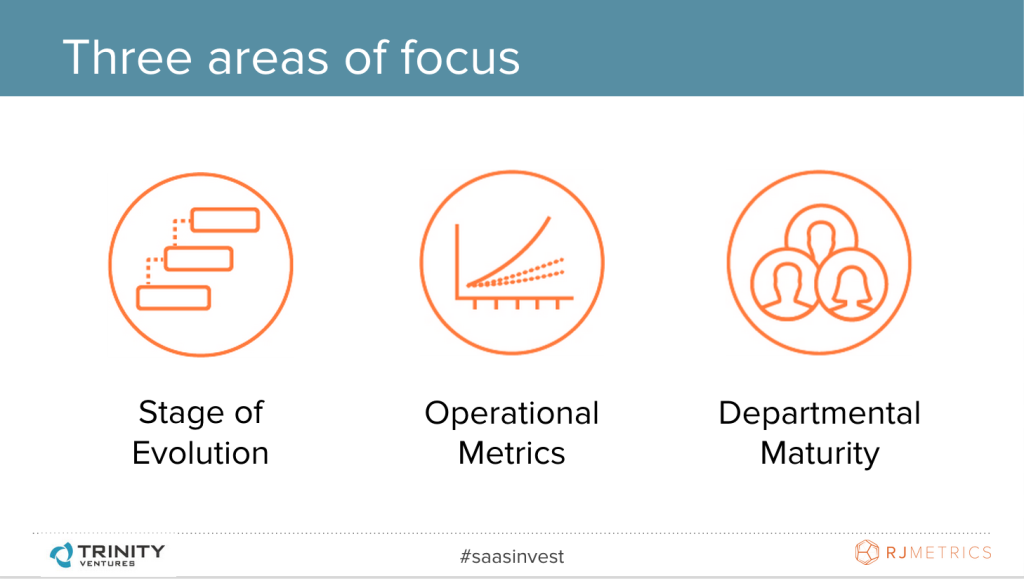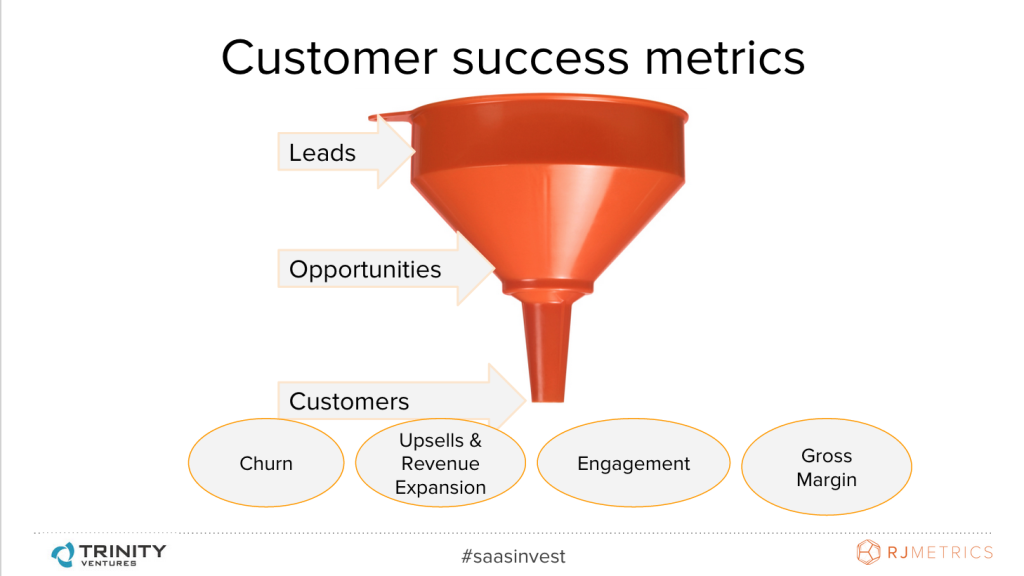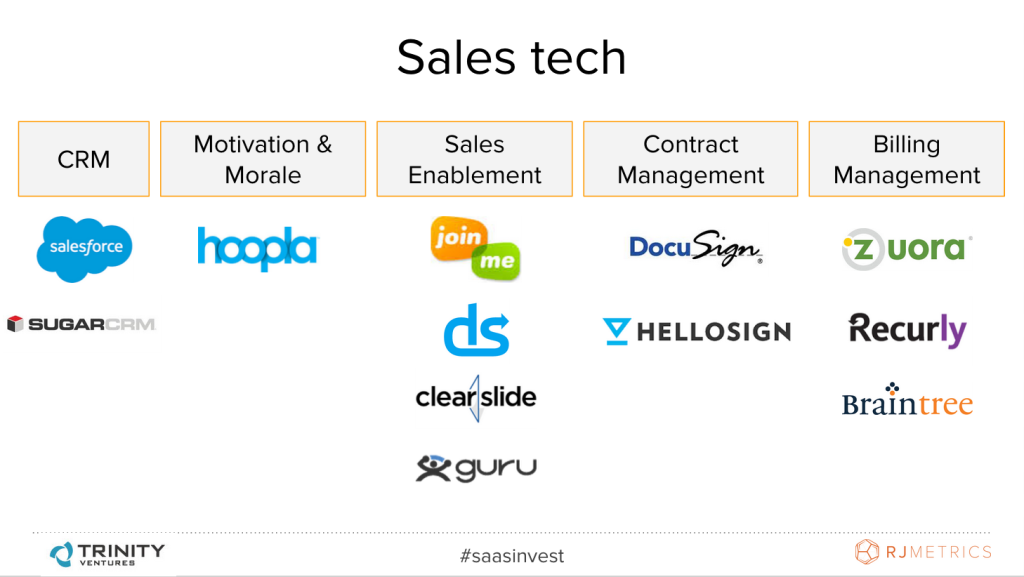Last week, our CEO Robert J. Moore was joined by Karan Mehandru, General Partner at Trinity Ventures to discuss the investor’s perspective on evaluating SaaS startups. Karan and Bob covered what investors look for during the due diligence process, what signs indicate big opportunities, and what high-level metrics matter for measuring company performance.
If you missed it, you can download the slide deck, watch the full event below, or keep reading to catch the highlights.
Three areas of focus for evaluating a SaaS startup
Karan kicked off the event by explaining his overarching approach to evaluating SaaS startups — pick markets first. By understanding the market a company is entering and how a SaaS product might disrupt or augment that market, investors can get a sense early on for the potential of a given company. This thematic approach provides the context for the three core areas of focus for evaluation.

Stage of evolution
There are three major growth stages investors use to categorize SaaS companies. Here’s what they are and what investors are looking for at each one:
- Pre-revenue to $1M in annual recurring revenue (ARR): a great team and a compelling target market.
- $1-5M in ARR: early growth metrics that prove a product idea is viable.
- $8-10M in ARR: category leadership, execution excellence, and metrics that indicate a long-term, sustainable growth opportunity.
Operational metrics
Understanding stage of evolution provides the context needed for the next level of evaluation — operational metrics. Two of the most important metrics Karan covered are:
- New Annual Recurring Revenue (ARR): ARR gives an investor a sense of the current momentum of the business. It is calculated by capturing the gross new annual recurring revenue, adding upsells from existing customers, and subtracting churn. The rate of addition of new ARR is proof of existence of a new, highly recurring revenue stream. New ARR is the clearest way to measure a company’s ability to grow and scale across different stages.
- Churn: In Karan’s opinion, churn is the second most important metric. Churn is an important indicator of the overall health of a business both today and in the future. Last year Karan wrote a blog post that goes deep on the topic of churn and how it should be calculated to provide the most accurate insight on your business.
Karan also provided an overview of some of the important ratios in SaaS like ARR:CAC, LTV:CAC, and Cash:Burn. Watch the webinar for details or check out this infographic we made that visualizes the most important SaaS metrics.
Departmental maturity
As a company grows and evolves, so do the individual departments. Again, the specifics of how a team is evaluated will change based on what stage that company is in. But overall, there are three core areas an investor will be looking at within each department:
1. Roles: For any team, an investor is going to be looking at the people in leadership positions and how the company defines roles within each department. For example, is a marketing team investing heavily in public relations or are they building out a growth engineering team? Do they have resources dedicated to analyzing and making recommendations based on data?

2. Metrics: Outside of the high-level operational metrics, investors have performance metrics that they’ll be looking at for each department. For example, when evaluating a customer success team the investor will want answers to questions like: What percent of revenue is coming from the customer success team making upsells? How engaged are customers with the product?

3. Technology: As the SaaS landscape continues to evolve, investors are paying close attention to the types of technology that internal departments are using. For example, CRM software is a must-have for every sales team, but there’s a myriad of additional tools out there that can make a sales team for efficient.

How to measure your SaaS business
Karan opened the event by talking about how the inherent measurability of SaaS makes these companies so appealing to investors. SaaS companies are rich with data, and within this data, investors can find important clues about the viability of a given product.
